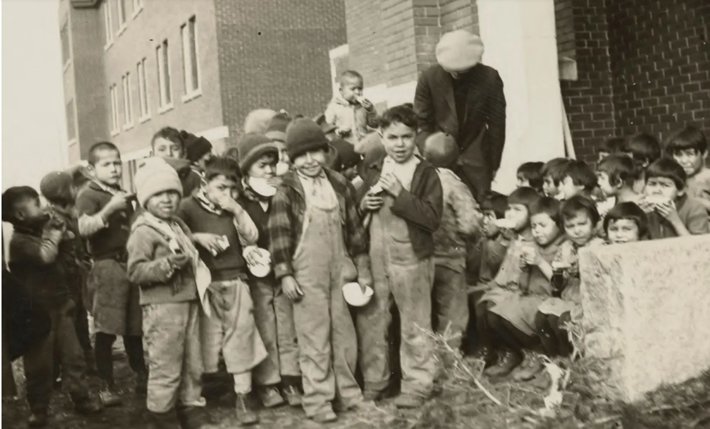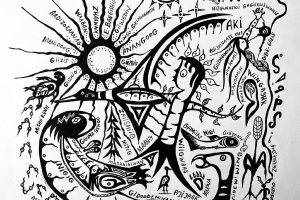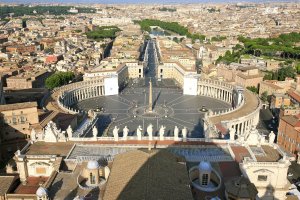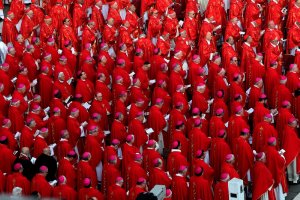“I humbly beg forgiveness for the evil committed by so many Christians against the Indigenous Peoples,” said Pope Francis at a traditional powwow in Alberta, Canada—an appropriate message on the eve of the August 9 UN International Day of the World's Indigenous Peoples.

This statement and his Canadian July 24—29 tour followed an invitation from Canada's Catholic Bishops for the pontiff to help the reconciliation process with Indigenous peoples.
“More than 150,000 First Nations children were required to attend state-funded Christian schools from the 19th century until the 1970s,” reports the National Catholic Reporter.
The odds of dying in one of these schools was one in 25—greater than the odds of dying as a serviceman during WW II, which was one in 26, reports the CBC. “Up to 60 percent of the schools were operated by Catholic organizations. Children attending these institutions were stripped of their Native languages and culture and forced to convert to Christianity. Widespread abuse has been documented, with up to 6,000 deaths reported.”
In 2015, the Canadian Truth and Reconciliation Commission called on the pope to issue an apology “for the Roman Catholic Church’s role in the spiritual, cultural, emotional, physical and sexual abuse of First Nations, Inuit and Métis children in Catholic-run residential schools.”
Indigenous journalist Brandi Morin covered the pope’s visit, traveling along with him on each leg of the visit. She expressed mixed feelings in her opinion piece published August 8 in Aljazeera.
“It was the morning of July 25 and these Indigenous people were making their way to the main pow wow arbor at the reservation of the Ermineskin Cree, one of four Indigenous nations that make up the community, about 100km (62 miles) south of Alberta’s capital city of Edmonton,” she wrote.
“As I watched them, I broke down and cried. After documenting the stories of countless survivors of the residential schools in my work as an Indigenous journalist and traveling to Rome where the pope first apologized on April 1, I was finally about to witness an admission of the evils the Catholic Church had inflicted upon Indigenous children on their own native lands.
“I am from the Michel First Nation, a band of Cree and Iroquois people who were displaced from our reserve west of Edmonton. My beloved ‘Kohkum’ (grandmother in Cree) was a survivor of the notorious residential schools and I have carried her pain throughout my lifetime.”
When the pope traveled to the Lac Ste Anne pilgrimage site, Morin’s mother, who had remained bitter about the Catholic church even though her own abused mother had forgiven the church, decided to come. And she appeared to experience closure from attending.
“Tears of healing streamed down my mother’s face as she spoke of her forgiveness for what was done to our people, and as I sat on the sand—the pope just feet away from me—I felt Kohkum’s spirit.”
The following day, Morin felt bitter over what she described as the pontiff parading in his popemobile, “waving at the cheering crowds and kissing babies.” But later, in the remote city of Iqaluit in the high Arctic, the final stage of the papal apology tour, she found his actions and words far more appropriate.
The pope spoke of “how evil it is to break the bonds uniting parents and children, to damage our closest relationships, to harm and scandalize the little ones.” He told of “the indignation and shame” he had felt for months.
He begged their forgiveness and said “I’m sorry,” in Inuktitut, the language students were forbidden to speak at the school.
Morin ended her article saying, “On the papal plane later that evening before returning to Rome, Pope Francis declared that genocide was committed against Indigenous people in Canada. This is something we have known all along. But to hear it from the leader of such a powerful institution felt like a revolutionary breakthrough. This public acknowledgment has implications that will, hopefully, help the process of healing and reconciliation.
“But just because the apology tour is over it does not mean the road to reckoning and reparations is. We have a long way to go on this journey with the Church and with governmental powers and institutions in Canada. We must keep the momentum of the broken hearts of all who were affected by the unmarked graves and the truths of the colonial harms that took place. We must use it as fuel to create a new and just way forward to ensure no children or families will ever have to experience this nightmare again.”
_______________
From its beginnings, the Church of Scientology has recognized that freedom of religion is a fundamental human right. In a world where conflicts are often traceable to intolerance of others’ religious beliefs and practices, the Church has, for more than 50 years, made the preservation of religious liberty an overriding concern.
The Church publishes this blog to help create a better understanding of the freedom of religion and belief and provide news on religious freedom and issues affecting this freedom around the world.
The Founder of the Scientology religion is L. Ron Hubbard and Mr. David Miscavige is the religion’s ecclesiastical leader.
For more information visit the Scientology website or Scientology Network.


